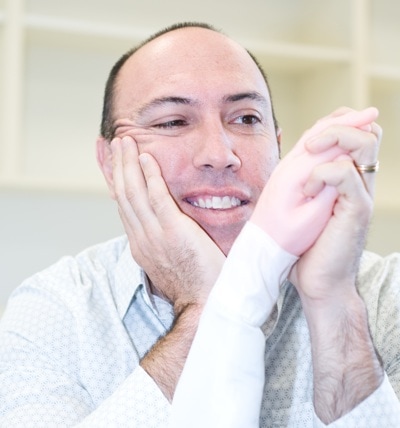There is nothing like a good thinking session to kick off the new year. In their new paper, just published in Pain Medicine, the dulcet tones of A/Prof Milton Cohen and partners have been transformed to print in what is a very interesting critique of the theory of pain as a disease. Or, as they put it, ‘pain-as-a-disease’. It really is a tricky issue and my thoughts on it are on the record here, but Cohen et al take a more theoretical knife to the idea. They purport to test these three theories – specificity, neuroplasticity and disease theories – under what they call a framework of evolution of pain medicine theory. They conclude that the evolution from specificity to neuroplasticity was based on evidence and conceptual clarity, but that the subsequent evolution to pain-as-a-disease is faulty on the grounds that (i) pain is at once considered a symptom, a cause and a pathology, and (ii) the evidence concerning pathology is wishy washy.
1 Pain as a symptom, a cause and a pathology
Two tenets of ‘disease’ are that it is associated with abnormal structure or function of a body system and a characteristic clinical profile – the disease is a cause of the clinical presentation. This is the Catch 22 – chronic pain is considered a characteristic set of symptoms caused by the disease (pain). That is, chronic pain is caused by chronic pain. Confused?
2 Wishy washy evidence of pathology
Cohen et al argue that evidence of gray matter loss, which underpins the disease definition, is not that strong – and I tend to agree, especially in light of this new paper which argues that up to 95% of findings of abnormal gray matter density, using voxel based morphometry, are likely to be false positives (you read that right – check out our previous blog post on it here). Rather than repeat Cohen et al’s coverage of the evidence, read their paper and see what you reckon.
Cohen et al won’t make any friends in high places with this paper, particularly with this assertion:
“By blurring the lines of cause and effect and of antecedent and consequent, taken together with the failure to propose an acceptable name for this “disease” other than the morally charged “maldynia” [24], this proclamation ultimately constitutes the philosophical error captured by Wittgenstein [25] in his aphorism #114: “One thinks that one is tracing the outline of the thing’s nature over and over again, and one is merely tracing round the frame through which we look at it.” The claim that pain is a disease is thus passed off as an assertion of certainty but only because that is demanded by the frame of reasoning through which it was conceived.”
However, I suspect that they are not driven by a need for friends. Rather they might be driven by a need for the right process, and that seems critical to this debate.
Perhaps it comes down to whether one is outcome-driven or process-driven. That is, an outcome-driven approach would render the technicalities emphasised by Cohen et al unimportant in comparison to what is at stake. If chronic pain needs funding, and our societies were ploughing money into fruit, would it be all that bad if we redefined chronic pain as a fruit, in order to get the money it deserves?
The alternative, process-driven approach, would be to call chronic pain the consequence of a disease to which we would have to give a very uncatchy name, for example “ongoing implicit perception of threat to body tissue as a result of multiple system sensitivity and inaccurate evaluative processes, in the absence of true threat to body tissue”. If we did that, what are the chances of getting it understood by the powers that be, and therefore funded? We would remain true to our modus operandus, but the problem would continue to fly under the societal radar. By taking a process-driven approach, Cohen et al are defenceless against outcome-driven criticisms, but the same is true in reverse – to define chronic pain as a disease hits up against the Catch 22 mentioned earlier and there is not really anywhere to go.
Is there a third way perhaps? Is it pie in the sky to hope that we might increase community understanding and acceptance of the multifactorial nature of chronic pain, and the huge burden it places on us as a society and on the individuals who suffer and their families, and then establish it as a problem that we might collectively invest in solving?
Time, I guess, will tell.
About Lorimer Moseley
 Lorimer is NHMRC Senior Research Fellow with twenty years clinical experience working with people in pain. After spending some time as a Nuffield Medical Research Fellow at Oxford University he returned to Australia in 2009 to take up an NHMRC Senior Research Fellowship at Neuroscience Research Australia (NeuRA). In 2011, he was appointed Professor of Clinical Neurosciences & the Inaugural Chair in Physiotherapy at the University of South Australia, Adelaide. He runs the Body in Mind research groups. He is the only Clinical Scientist to have knocked over a water tank tower in Outback Australia.
Lorimer is NHMRC Senior Research Fellow with twenty years clinical experience working with people in pain. After spending some time as a Nuffield Medical Research Fellow at Oxford University he returned to Australia in 2009 to take up an NHMRC Senior Research Fellowship at Neuroscience Research Australia (NeuRA). In 2011, he was appointed Professor of Clinical Neurosciences & the Inaugural Chair in Physiotherapy at the University of South Australia, Adelaide. He runs the Body in Mind research groups. He is the only Clinical Scientist to have knocked over a water tank tower in Outback Australia.
Link to Lorimer’s published research here. Downloadable PDFs here.
References
Cohen, M., Quintner, J., & Buchanan, D. (2013). Is Chronic Pain a Disease? Pain Medicine DOI: 10.1111/pme.12025
Scarpazza, C., Sartori, G., De Simone, M., & Mechelli, A. (2013). When the single matters more than the group: Very high false positive rates in single case Voxel Based Morphometry NeuroImage, 70, 175-188 DOI: 10.1016/j.neuroimage.2012.12.045



